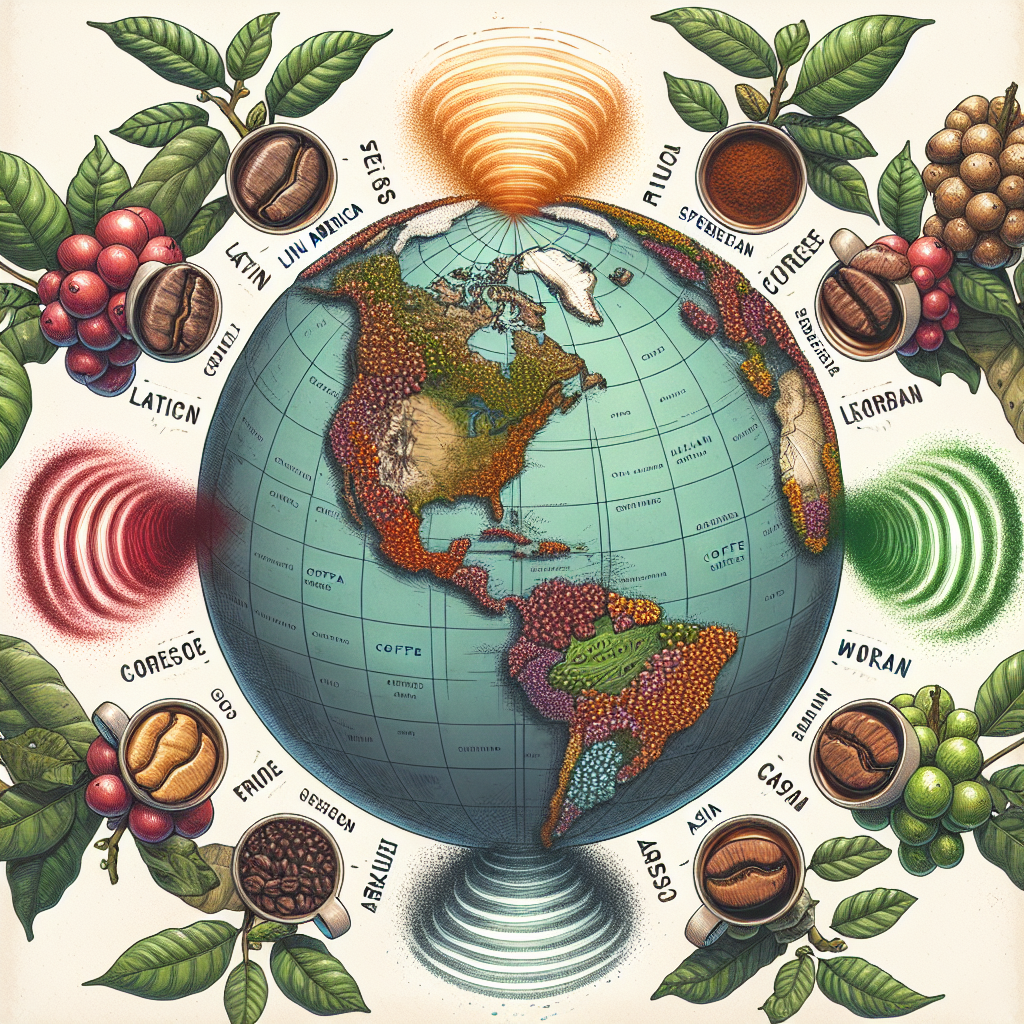Are you a coffee lover who wants to explore the world of espresso? Look no further! In this beginner’s guide, we will take you on a journey to understand the different origins of espresso beans. From the lush plantations of Brazil to the high-altitude farms of Ethiopia, we will unravel the unique flavors and characteristics that each region brings to your morning cup of joe. Prepare to embark on a caffeinated adventure as we dive into the world of espresso bean origins!
Types of Espresso Beans
Espresso is loved by coffee enthusiasts around the world for its rich and intense flavor. The type of beans used to make espresso greatly influences its taste and characteristics. In this article, we will explore the two main types of espresso beans: Arabica beans and Robusta beans. Understanding the differences between these beans will help you choose the perfect espresso for your palate.
Arabica Beans
Arabica beans are considered the gold standard when it comes to espresso. They are known for their superior quality and delicate flavors. Arabica beans have a higher acidity level and a wide range of flavors that can include floral, citrus, chocolate, and even nutty notes. The characteristics of Arabica beans lend themselves well to creating a balanced and complex espresso.
Characteristics
Arabica beans have distinct characteristics that set them apart from other coffee beans. They usually have a sweeter and softer taste compared to Robusta beans. This is due to the higher sugar content found in Arabica beans. The acidity level is also higher, giving Arabica espresso a bright and vibrant flavor. Additionally, Arabica beans have a lower caffeine content than Robusta beans, making them perfect for those who are sensitive to caffeine.
Growing Regions
Arabica beans thrive in specific growing regions known for their ideal climate and altitude. Some of the most well-known Arabica producing countries include Colombia, Brazil, Ethiopia, Costa Rica, and Guatemala. These regions provide the perfect conditions for Arabica beans to develop their unique flavors and characteristics.
Popular Varieties
Within the Arabica family, there are various varieties that offer different flavor profiles. Some popular Arabica varieties used for espresso include Colombian, Ethiopian, Brazilian, Guatemalan, and Costa Rican. Each variety brings its own unique set of flavors and nuances to the espresso, allowing coffee enthusiasts to explore a world of diverse tastes.

Robusta Beans
While Arabica beans may be the favored choice for espresso, Robusta beans have their own merits and are widely used in espresso blends. Robusta beans are known for their bold and strong flavors, with a higher caffeine content compared to Arabica beans. They are often used for their ability to produce a thick and crema-filled espresso shot.
Characteristics
Robusta beans are known to have a more bitter and earthy taste compared to Arabica beans. They have a higher caffeine content, which gives them their characteristic energy boost. Robusta espresso is often described as having a full-bodied and robust flavor that pairs well with milk-based drinks. The higher caffeine content also contributes to a stronger and more intense espresso experience.
Growing Regions
Robusta beans are primarily grown in regions with a tropical climate, such as Vietnam, Brazil, and Indonesia. These regions provide the ideal conditions for Robusta beans to thrive, with the high temperatures and humidity contributing to their characteristic flavor profile.
Popular Varieties
The most common Robusta variety used in espresso blends is Coffea canephora, which is known for its high caffeine content and bold flavors. This variety is widely cultivated in Vietnam, the largest producer of Robusta beans. Other popular Robusta varieties used in espresso include Excelsa and Liberica, each bringing its own distinct flavors to the mix.
Understanding Coffee Bean Origins
To fully appreciate the different flavors and characteristics of espresso beans, it is important to understand their origins and the factors that influence their development. Coffee beans are grown in specific regions around the world, known as the coffee belt, where the climate and altitude play a crucial role in shaping the final product.
Coffee Belt
The coffee belt refers to the regions around the globe where coffee plants thrives. This belt spans from around the 23.5° N latitude to the 23.5° S latitude, encompassing countries in Central and South America, Africa, and parts of Asia. The varying climates and altitudes within the coffee belt contribute to the diverse flavors and characteristics found in espresso beans.
Altitude
Altitude is one of the key factors that determines the quality and flavor of coffee beans. Beans grown at higher altitudes tend to have a slower growth rate and develop more complex flavors. High altitude beans are often prized for their acidity, brightness, and delicate aromas. On the other hand, beans grown at lower altitudes have a faster growth rate and tend to produce a more straightforward and less complex flavor profile.
Climate
The climate in which coffee beans are grown greatly influences their flavor and characteristics. In a tropical climate, where temperatures are high and humidity is abundant, beans tend to develop a fuller body and a richer flavor profile. On the other hand, in a mild climate with cooler temperatures, beans often have a lighter and more delicate taste. Understanding the climate of a specific growing region can give you insights into the potential flavors of the espresso beans it produces.
Soil
The composition of the soil in which coffee trees grow plays a vital role in shaping the flavor of the beans. Different types of soil will have varying nutrient levels and mineral content, which can impact the taste and aroma of the espresso. For example, volcanic soil is known to be rich in minerals, resulting in a vibrant and unique flavor profile. In contrast, sandy soils may produce beans with a lighter body and a more subtle taste.
Processing Methods
Once coffee cherries are harvested, they undergo different processing methods that can further influence the flavor of the beans. There are three main processing methods: natural (dry) process, washed (wet) process, and honey process. Each method introduces different elements into the flavor profile of the beans. For example, the natural process, where the cherries are dried whole, can result in beans with fruity and wine-like flavors. Understanding the processing methods can help you identify the taste profiles that appeal to your preferences.

Oceania
Oceania, which includes countries such as Australia and New Zealand, is known for producing unique espresso beans with a distinct flavor profile. The region’s distinctive climate and soil conditions contribute to the development of these flavors.
Flavor Profile
Oceania espresso beans are often characterized by their fruity and bright flavors. They have a lively acidity and can exhibit notes of tropical fruits, citrus, and even floral undertones. The unique flavor profile of Oceania beans makes them a favorite among coffee connoisseurs looking for something different and exciting.
Countries and Varieties
Australia and New Zealand are the main players in the Oceania coffee scene. Australian coffee beans are known for their vibrant acidity and complex flavors. Some popular varieties from Australia include the Queensland Blue, the Skybury, and the Northern Rivers. New Zealand, on the other hand, produces beans with a smoother and more approachable taste. Prominent New Zealand varieties include the Hawke’s Bay and the Waikato.
In conclusion, understanding the different origins and characteristics of espresso beans can greatly enhance your coffee-drinking experience. Whether you prefer the delicate and nuanced flavors of Arabica beans or the bold and robust profile of Robusta beans, exploring the world of espresso beans opens up a world of unique tastes and aromas. So, why not embark on a coffee journey and discover the perfect espresso that suits your palate? Cheers to your coffee adventure!

